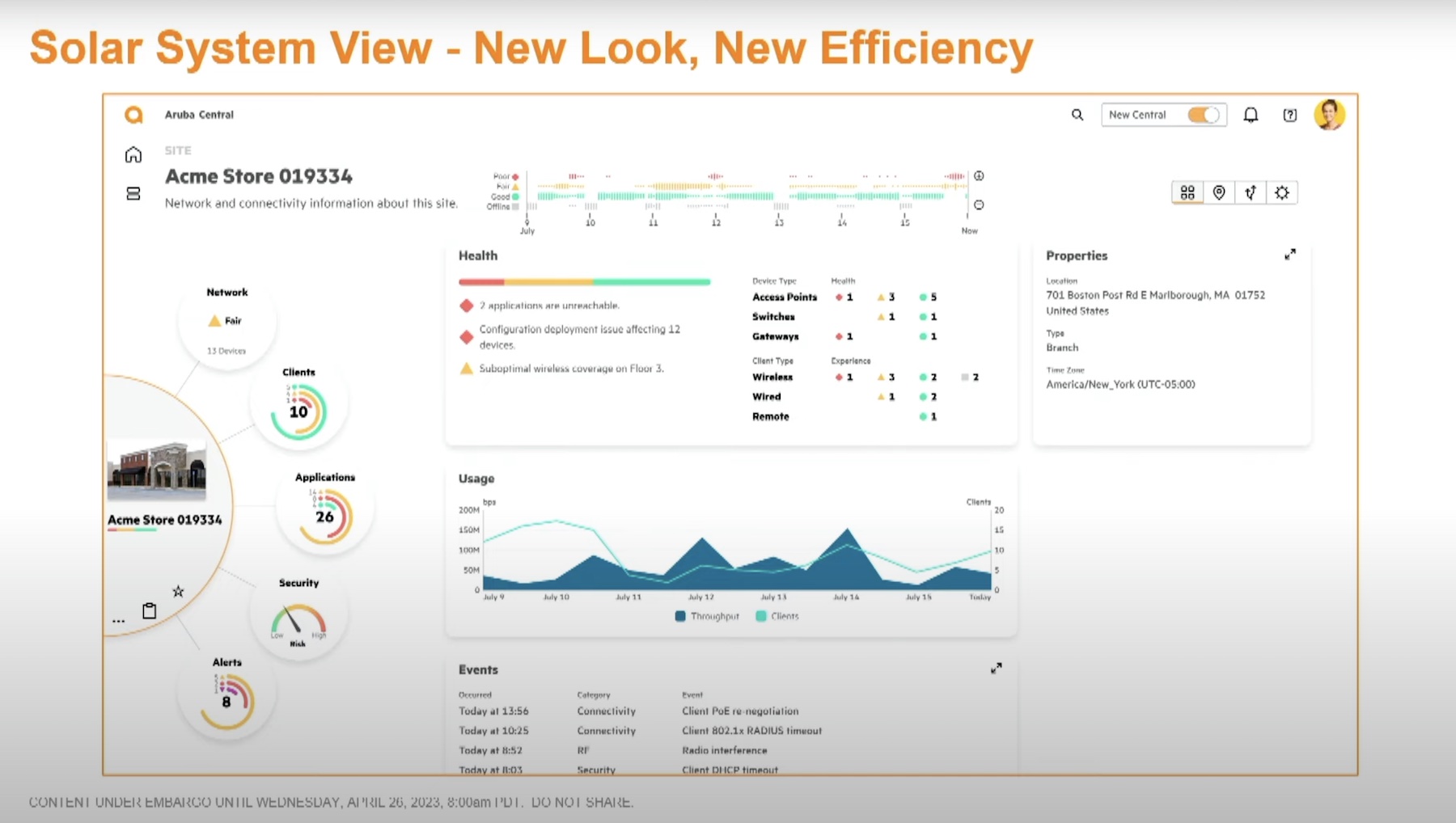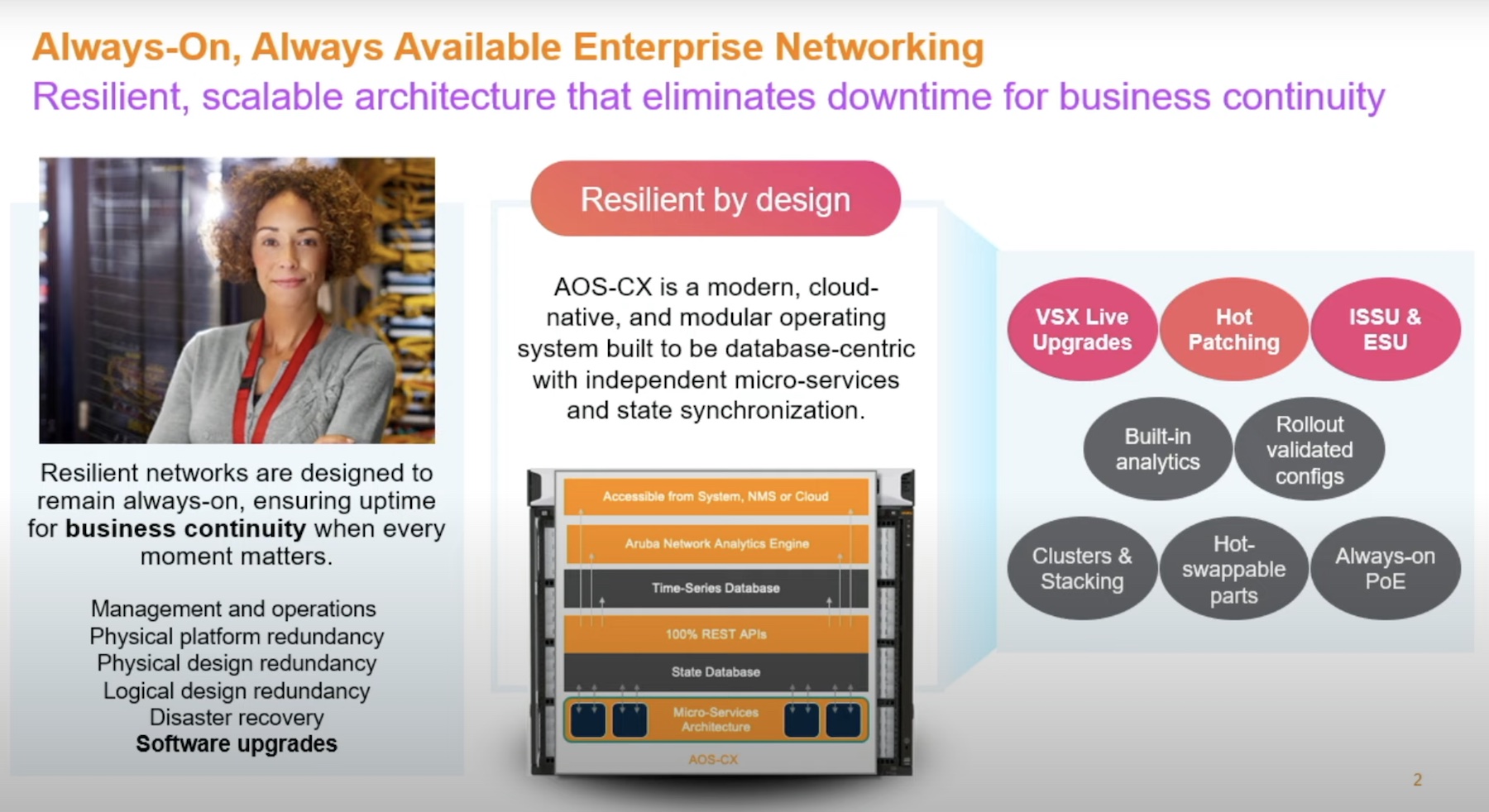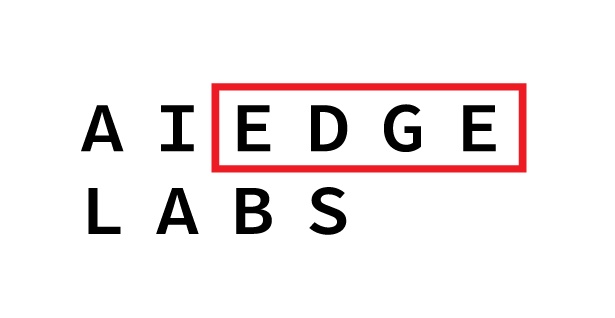The definition of “edge” is radically different today than it was two years ago. The world of occasional remote work and enterprises filled with office employees is now a remote workforce using technology that wasn’t designed with decentralized enterprise use in mind. At first, the idea that we would eventually go back to the office was all but a given, however, the recent trends we’ve seen indicate that we’re going to be a more permanent distributed workforce. The edge isn’t just a branch office now. It’s an individual worker wherever they are working.
What does that mean for your strategy now? Those carefully laid plans of hardware upgrades for your offices and the security strategies you’ve laid out are not going to be implemented as you wanted. Your users aren’t safely ensconced behind the corporate firewall any longer. They’re using consumer-grade wireless to connect through a residential Internet connection to get to cloud resources. Is there any way to build a new strategy to give your users the connectivity and safety they need, no matter where they are?

Living on the Edge
One company that is embracing this opportunity is Aruba. They’ve been focused on solving a ton of connectivity problems over the past few years with the explosive growth of wireless connectivity. In the last year, they’ve also gained a significant amount of experience with the acquisition of Silver Peak. This added security and edge connectivity leadership came at just the right time to help Aruba start leading the charge to transforming the way we think about the edge of the network.
We’ve already lived through a massive transformation of the way the knowledge workers interact with their daily tasks. Gone are the wired workstations behind corporate firewalls. Instead, they have been replaced by mobile devices like laptops and tablets that can log on from anywhere and gain access to resources either in the enterprise or in the cloud, thanks in large part to the continuing march of digital transformation. Workers want to access the resources they need from wherever they are. Before 2020 that was an occasional issue to solve. In 2021 it’s the new way we do business.
Aruba understands that connectivity and security aren’t separate issues to deal with. They’re integrated pieces or the same puzzle. Wireless networking isn’t just a cool thing we do to show off tech to people. It’s the default method of connecting to the world. Coffee shops, department stores, and even public spaces are blanketed by wireless now. That connectivity needs to be secure to keep data safe. When it was just online banking or the occasional email it wasn’t a big deal. Today, with regulated data being accessed from employee homes and sensitive emails being sent on open wireless networks, it’s important to ensure that your workers have a little extra protection to keep you out of the news for a data breach or personal information exposure.
Extreme Connections
The first way that Aruba is staying ahead of the needs of workers is with the industry-leading adoption of the new Wi-Fi 6E standard. Here’s a great overview of the status of where we are from Chuck Lukaszewski at Networking Field Day earlier this year:
Chuck has been driving the adoption of the new 6GHz spectrum for a number of years. Seeing that the spectrum is being adopted in Canada and soon in Europe means that Wi-Fi 6E, the marketing term from the Wi-Fi Alliance for this spectrum today, is going to grow instead of stagnating. It didn’t take long for Aruba to release info on their newest line of access points that take advantage of the new standard. Here’s an overview of the Aruba 630 from Mobility Field Day:
The new spectrum allocation is important for knowledge workers. As IoT becomes more prevalent in all parts of our technology lives, we’re going to run out of spectrum soon in the more well-used bands. That means for devices that are more complex or have more room, such as tablets and laptops, the 6GHz band is going to be important to ensure that we have reliable connectivity free from the interference of devices we have no control over. Just like the move to 5GHz for bigger devices years ago, this new frontier is critical for those that are working in areas where the airspace isn’t easy to configure the way you’d like. Shipping your employees a new Aruba 630 for their next-generation laptop or tablet is a great way to give them good connectivity for their new remote branch office.
Safety Dance
As mentioned above, connecting your users more quickly is just one piece of the puzzle. You also have to ensure they stay secure in all that they do. The challenges of security for remote users in the past were all but impossible for security teams to solve. More than a few BYOD deployments were sunk because the level of security couldn’t be improved outside of the enterprise bastion. Even for those organizations that were able to provide remote security, there were often sharp divides about what data could be accessed in the office versus what you could see when you were in a coffee shop. Today that divide is unacceptable to a workforce that is looking at the possibility of never going back to a corporate office.
Aruba was already working on a solution in this area before we experienced the pandemic. Aruba knows that security is more than just a workstation agent or firewall. It’s intelligence that knows where you are and what you need to stay safe. The first step is Aruba EdgeConnect, a solution that heavily leverages the talent of Silver Peak. As seen at Networking Field Day, EdgeConnect gives you the best of SD-WAN optimization and secure connectivity between your remote offices and the cloud or the enterprise:
When you consider that your branch office count probably increased 10x during the pandemic, you can realize how critical it is for your operations teams to be able to quickly define policy and implement it everywhere without touching every individual box. With digital transformation, it is likely that your organization will start adopting new platforms quickly to help increase your employees’ productivity. With the capabilities of EdgeConnect, you can define new settings to optimize those applications and have them waiting for your users as soon as they log on. No more panicked phone calls to the help desk wondering why this new thing the boss wants them to use is so slow. And if there is an issue, the troubleshooting capabilities included in the platform ensure easy fixes.
What about securing users from elsewhere? Like coffee shops or in homes with no way to use enterprise-grade hardware? Thankfully Aruba has the Edge Services Platform (ESP) to take care of these challenges. Here’s another great overview from Mobility Field Day talking about how to leverage ESP for working from anywhere:
Through a combination of remote access points, intelligent VPN clients, and the powerful Aruba ClearPass platform, you can be assured that the workers sitting in their living rooms or at a local Starbucks are going to be safe when they’re dealing with the data that they’re working on. In enterprises with even more regulations, such as financial or medical, the increased security offered by this combination can also help ensure that only authorized users or devices are accessing data. That can give you peace of mind as you wonder who is in your network and what they’re looking at.
Bringing It All Together
The Aruba edge solutions that I’ve seen at Networking Field Day and Mobility Field Day this year are impressive for sure. In 2019, I wondered if enterprises would ever embrace the idea that people wanted to have flexible work locations and if they would ever adopt technologies that would allow people to stay safe outside of the confines of the enterprise. Fast forward two years and we’ve seen the enterprise world scrambling to find ways to protect users that can’t come back to their desk no matter what. Thanks to the foresight of the Aruba teams and their smart acquisition of Silver Peak, they’re ahead of the curve when it comes to redefining the edge for the users that live there.
For more information about the Aruba solutions mentioned in this article, make sure you check out their website at http://ArubaNetworks.com or their presentations from Networking Field Day here and Mobility Field Day here.




